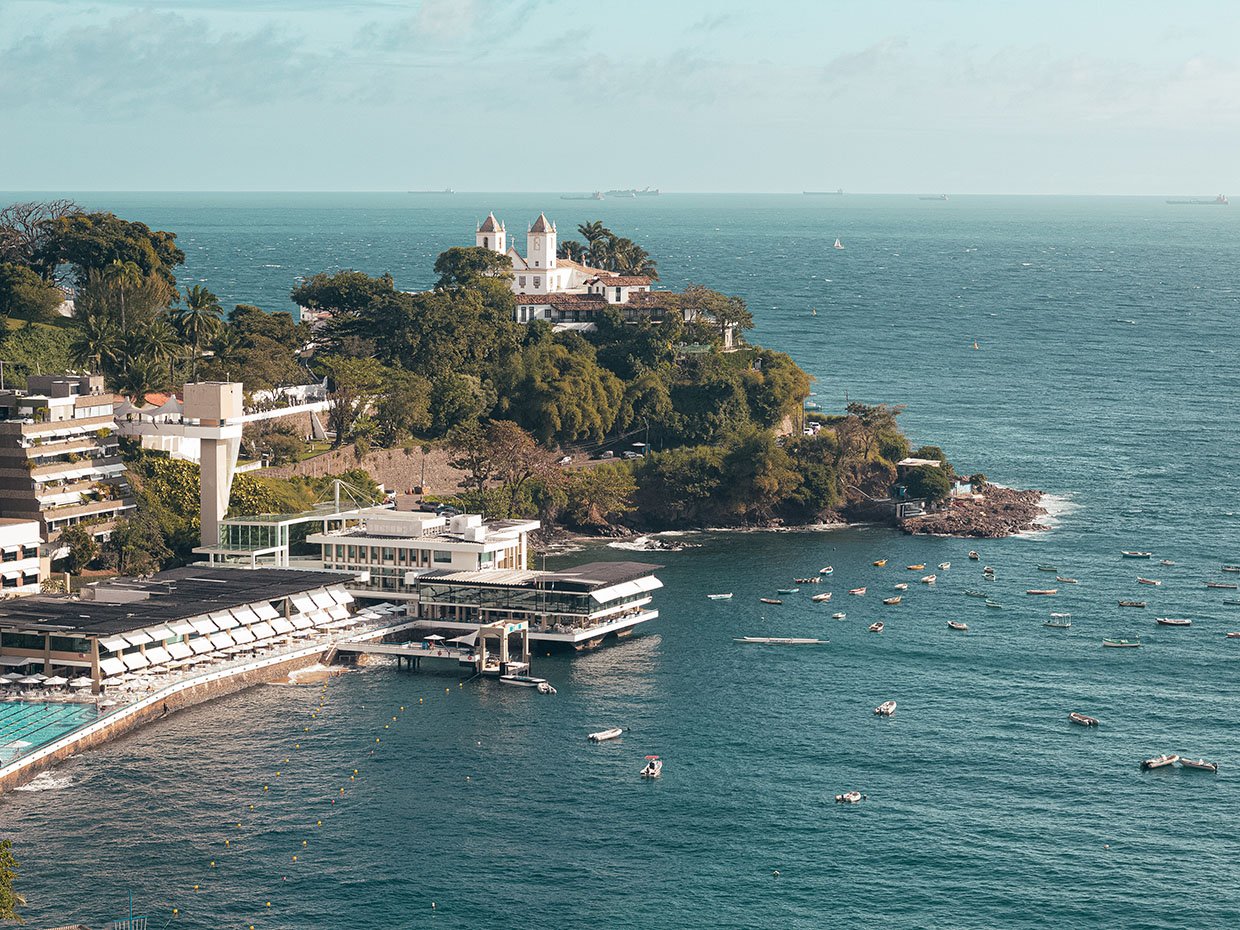Salvador de Bahia is a cheerful and welcoming Brazilian city, with neighborhoods and streets full of color and the aroma of traditional Bahian cuisine.
Historic Center
It is divided into Cidade Alta (Upper City), located on top of the cliff, and Cidade Baixa (Lower City), by the bay. In 1985, it was recognized as a UNESCO World Heritage Site.
The Upper City is the colonial area, where churches and palaces from the 16th to 18th centuries line steep streets paved with large stone blocks. Its two main squares, Praça da Sé and Terreiro de Jesus, stand out, connected at the corner by the cathedral.
Praça da Sé was originally built in 1552 but was demolished in 1933. The space created by the demolition gave rise to the current square, which now hosts cultural and tourist facilities, offering beautiful views of the Bay of All Saints (Baía de Todos os Santos). Praça da Sé features fountains and remnants of the old church.
Terreiro de Jesus, meanwhile, is a historic site for religious celebrations, surrounded by four churches and the 19th-century building of the Medical School. Along the streets around these squares, you’ll find bars, hotels, craft shops, and schools for music, dance, and capoeira.
The Lower City, mainly a commercial area, has lost much of its original characteristics over time, but it is still visited by tourists and features several places of historical and cultural interest.
Terreiro de Jesus Square
This square is located near the already mentioned Praça da Sé. The most prominent building here is the Cathedral Basilica of Salvador, formerly a Jesuit school and church, which occupies the western side of the square. It was renovated in the mid-20th century by the renowned landscape architect Roberto Burle Marx.
The square takes its name from the fact that this land was granted to the Jesuits by the governor during the early founding days of the city.
Burle Marx modernized the square in 1948, replacing the old pavement with a parterre of winding black-and-white Portuguese tiles, incorporating local materials like shells and beach pebbles.

Terreiro de Jesus Square
Cathedral Basilica of Salvador
The Cathedral Basilica of Salvador, also known as Salvador Cathedral or Sé Cathedral, is a prominent religious monument located in the historic center of the city.
It is dedicated to the Savior and is one of the oldest and most significant religious buildings in Brazil. Construction of the cathedral began in 1657 and was completed in 1672, under the direction of the Jesuits, who at that time were responsible for administering the Catholic Church in Brazil. The cathedral was built in Baroque style and features a large nave with side chapels dedicated to various saints, as well as a grand main altar.
The exterior of the cathedral is adorned with ornate carvings and sculptures, including images of saints and biblical scenes.
One of the most striking features of the Cathedral Basilica of Salvador is its imposing bell tower, which rises more than 80 meters high, making it one of the tallest structures in Salvador’s historic center. The tower is decorated with intricate carvings and features a clock that was added in the 19th century.
The interior of the cathedral is equally impressive, with an elaborately decorated ceiling, ornate altarpieces, and a collection of important religious artifacts, including an 18th-century statue of the Savior.
The cathedral also houses a museum that displays a collection of sacred art and religious artifacts.
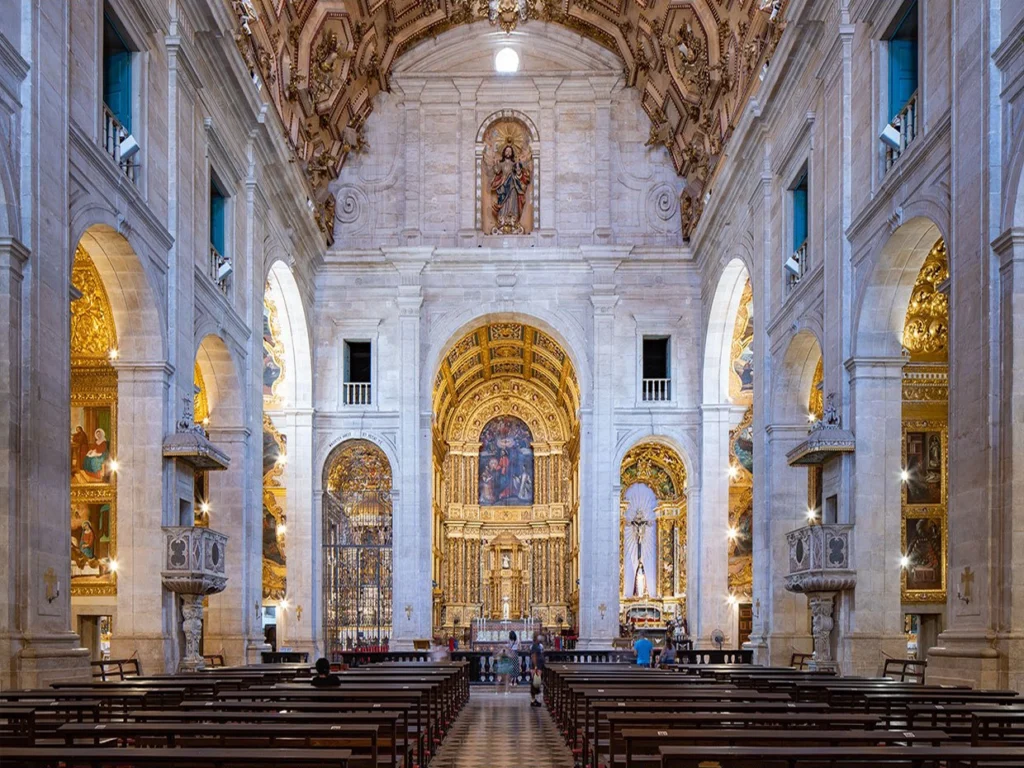
Cathedral Basilica of Salvador
Pelourinho
Pelourinho is one of the most vibrant and lively neighborhoods in the historic center. Its streets are always filled with street musicians, dancers, and vendors offering local products and souvenirs.
It is also well known for its cultural celebrations and festivals, such as Carnival and Independence Day festivities.
Its history is closely tied to the development of the city itself. Salvador was founded in 1549 by Tomé de Sousa, the first Governor General of Brazil, who chose the location for the pelourinho (the pillory, a place where punishments and executions were carried out) for its strategic position—on high ground, near the port and commercial area, and naturally protected by a steep elevation that made the city easier to defend.
Pelourinho was primarily a residential neighborhood, home to the city’s finest houses until the early 20th century. During the 1960s, however, the area suffered significant urban decay due to modernization and the shift of economic activities to other parts of Salvador.
About twenty years later, after UNESCO recognized the area as a World Heritage Site in 1985, a major revitalization effort was launched by the state government. Since then, Pelourinho has transformed into what it is today: an important cultural hub in the city of Salvador.

Church and Convent of São Francisco (Igreja e Convento de São Francisco)
This is the church seen in the photo above, located in the central square of the historic Pelourinho neighborhood. It is a Baroque-style church with an adjoining convent. The church was built between 1708 and 1723, but its interiors were decorated by various artists throughout the 18th century. Today, they are considered some of the finest examples of Portuguese-Brazilian Baroque art.
From this site, visitors can even take a virtual tour of the church’s stunning interior.
The Largo de São Francisco square, with the church and convent of the same name in the background, is one of the most picturesque spots in the area.
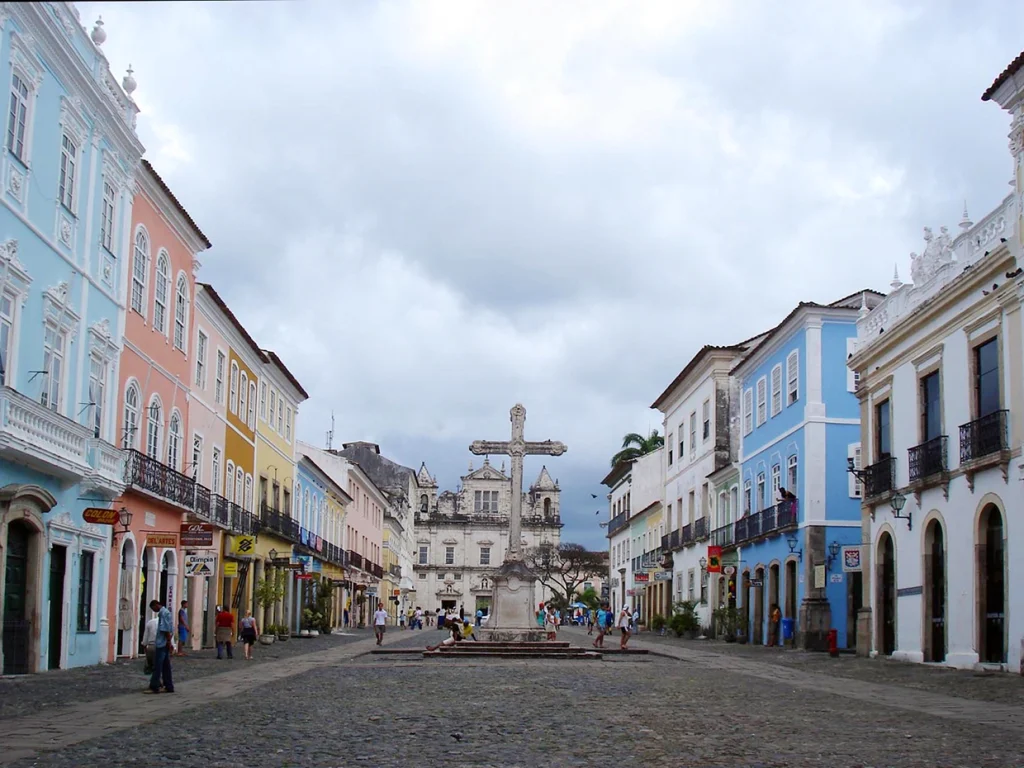
Church of Our Lady of the Rosary of the Black People
One of the most remarkable features of this church is the tiles depicting devotion to the Rosary, made in Portugal and dating back to 1790. Its history is closely tied to the Black community, and its worship rituals incorporate music inspired by the Candomblé terreiros (Afro-Brazilian religious temples).
At the back of the church, there is an old cemetery for slaves. On the commemorative dates of Saint Barbara and Oiá, the church becomes the central point of vibrant festivities.

Rio Branco Palace (Palácio Rio Branco)
This is the former government seat of the State of Bahia and one of the oldest palaces in Brazil. It is located in Tomé de Sousa Square, close to the city hall building, the municipal chamber, and the Lacerda Elevator.
The palace dates back to the 16th century and was originally built to serve as the center of Portuguese administration. Over time, it has had several functions, including serving as a barracks and prison, and even hosting Pedro II during his visit to Bahia in 1859.
At the end of the 19th century, the palace underwent renovations that erased its Portuguese features, adopting a neoclassical style with French influences.
The palace was rebuilt in 1919 and named Rio Branco, in honor of the Baron of Rio Branco, a prominent Brazilian statesman. Today, it houses the Pedro Calmon Foundation, the Cultural Foundation of the State of Bahia, and the Governors’ Memorial.

Rio Branco Palace
Lacerda Elevator
The Lacerda Elevator is a famous public elevator in Salvador de Bahia, Brazil, that connects the Upper City and the Lower City.
It was inaugurated in 1873 and is one of the city’s iconic tourist attractions. Located at Praça Cayru, in the Comércio neighborhood near the Mercado Modelo, it stands 72 meters tall and is made of wrought iron. The elevator offers beautiful views of the Bay of All Saints and is used daily by thousands of people traveling between the two parts of the city.
We highly recommend visiting it and enjoying the stunning views of the city and the harbor from the top.
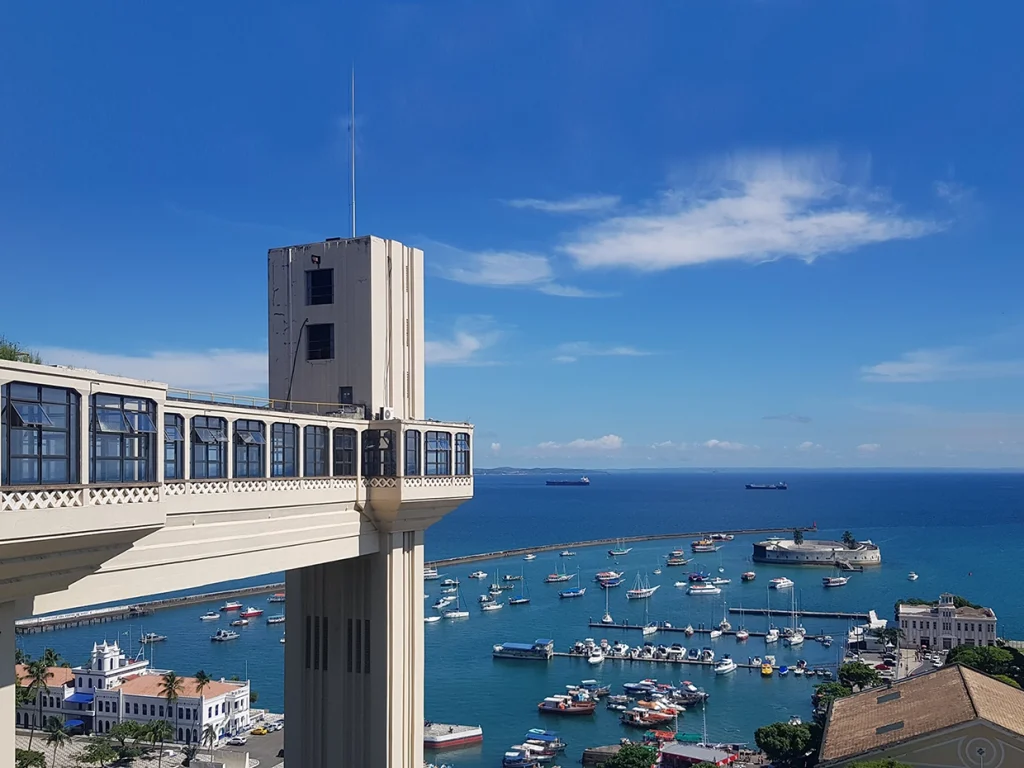
Mercado Modelo
Mercado Modelo is a craft market where you can find souvenirs and typical regional products. Since 1971, it has been housed in the Casa da Alfândega (Customs House) of Salvador, a building declared a National Heritage Site by IPHAN in 1966. Besides being a commercial hub, Mercado Modelo also hosts cultural tourist attractions such as capoeira performances.
The Mercado Modelo building has three floors and features a wrought iron structure dating back to the 19th century. Inside, you’ll find numerous shops and stalls selling a wide variety of products, from crafts and souvenirs to typical regional foods and drinks.
Among the most popular items sold here are leather goods, ceramics, clothing, hats, shoes, and jewelry. There are also many shops offering typical Bahian products like coconut sweets and dendê oil, and you can taste traditional local dishes such as acarajé and vatapá.
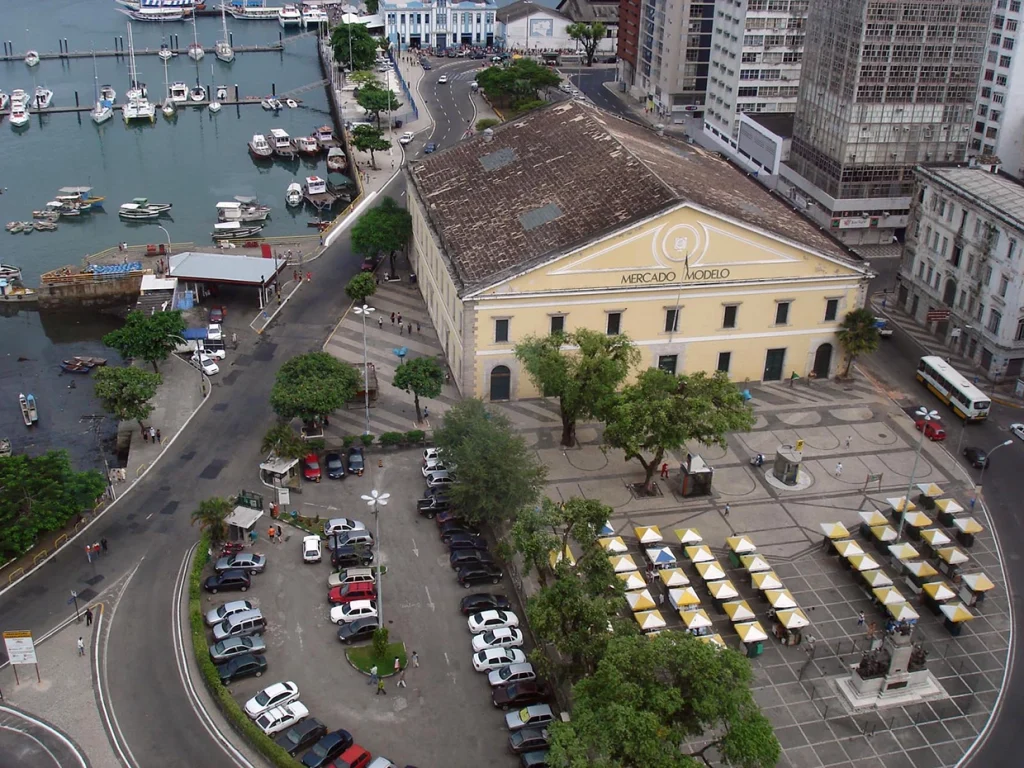
Museum of Modern Art of Bahia (MAM Bahia)
MAM Bahia is a cultural institution located in the Solar do Unhão neighborhood in Salvador de Bahia, Brazil. The museum building is a restored old plantation house adapted to host exhibitions of modern and contemporary art.
The museum houses a permanent collection of Brazilian modern art, featuring works by prominent artists such as Tarsila do Amaral, Candido Portinari, Di Cavalcanti, among others. It also organizes temporary exhibitions with both national and international artists.
The exhibition space is spacious and includes several rooms, such as a temporary exhibition hall, a cinema room, and a reading room. Additionally, the museum has a gift shop and a restaurant with stunning views of the sea.
One of the museum’s most remarkable features is its location overlooking the Bay of All Saints, allowing visitors to enjoy beautiful sea views while exploring the exhibitions. All in all, the Museum of Modern Art of Salvador de Bahia is a must-visit for art lovers visiting the city.
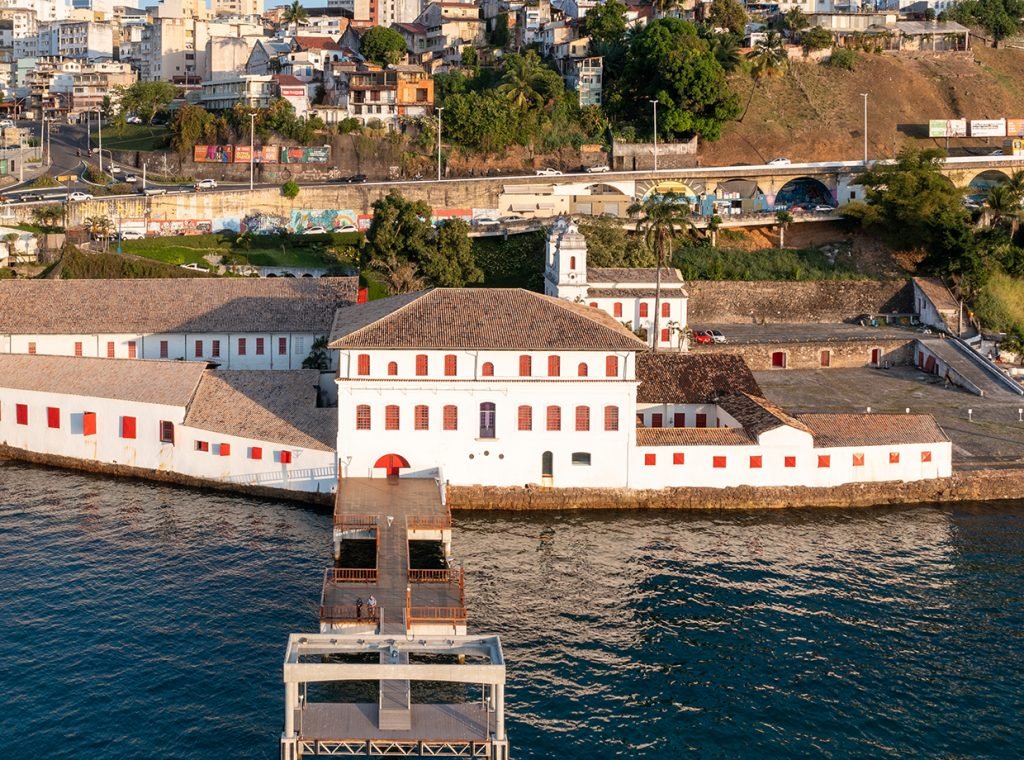
Farol da Barra
Farol da Barra is a city symbol and one of the most popular tourist attractions in Salvador.
Located at the tip of the Barra peninsula, at the southern end of the Bay of All Saints, it is considered one of the oldest and most beautiful lighthouses in Brazil.
Built in the 16th century and renovated several times over the centuries, it is still an active lighthouse guiding ships entering and leaving the bay. Additionally, it is an important tourist spot, offering stunning views of the Atlantic Ocean and the Bay of All Saints.
The Barra Lighthouse is a 22-meter-tall tower, painted white and red, with a spiral staircase leading to the top. From there, visitors can enjoy panoramic views of the bay, Salvador’s beaches, and the Atlantic Ocean.
At the base of the lighthouse, there is a small museum dedicated to the history of the lighthouse and navigation in the bay. There is also a plaza with benches and shade, where visitors can relax and take in the wonderful scenery.
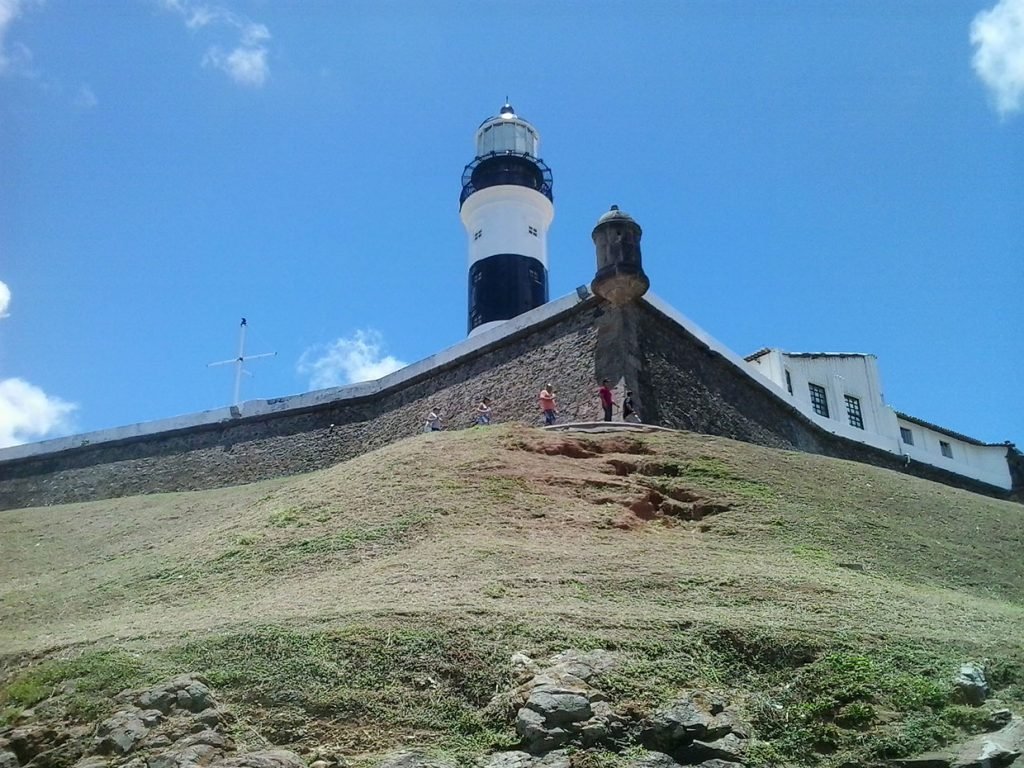
Porto da Barra Beach
Porto da Barra is a very popular beach among both locals and tourists. It’s quite spacious and offers a range of services, including bars and restaurants, as well as umbrella and beach chair rentals.
You can enjoy water activities like paddleboarding and kayaking here.
One of the best reasons to visit, especially in the late afternoon, is to catch its beautiful sunset. Keep in mind that this beach is highly popular, so it can get quite crowded at certain times of the day.

Fort of Santo Antônio
The Fort of Santo Antônio is a historic fortress located at the tip of the Itapagipe peninsula. Built in 1534, it is considered one of the oldest forts in Brazil.
The fort features a large stone perimeter wall and a three-story central tower that serves as a lookout point. Inside, there are several rooms hosting art and photography exhibitions, as well as a gift shop and a restaurant.
From the central tower of the Fort of Santo Antônio, visitors can enjoy stunning panoramic views of the Bay of All Saints and the city of Salvador. The fort is an important landmark in the city and is frequently used as a venue for cultural events and festivals.

Municipal Park
The land once belonged to Manoel Dias da Silva and was part of the old Pituba Estate. In the 1970s, Joventino Silva donated the park area, about 1.4 million square meters, to the City Hall due to urban development in the Pituba neighborhood. Later, it became known as Joventino Silva Municipal Park.
The park covers around 720,000 square meters of green space. It serves as a preservation area for the Atlantic Forest (Mata Atlântica), the original vegetation of the Brazilian coast. It is also the only place in the city where the Atlantic Forest transitions into dunes, so you can find a variety of ornamental and fruit-bearing species.
The terrain is rugged with clay and marshy soil. The park boasts a rich fauna, including mammals such as marmosets and opossums, birds, reptiles like lizards, and amphibians. The flora includes purple ipê, pau-paraíba, oiti, sucupira, coconut palms, oil palms, jackfruits, mango trees, loquats, bromeliads, and orchids.
Besides the green areas, the park offers multipurpose sports courts, children’s playgrounds, leisure and fitness equipment, a 3,500-meter jogging track, a bike lane, a senior citizens’ plaza, picnic areas, a medical center, a large parking lot with space for 270 cars, and an amphitheater named Dorival Caymmi with a capacity of 600 people.

Joventino Silva Municipal Park
Yemanjá Festival
This is a religious celebration held every year in February. People gather at Rio Vermelho Beach to pay tribute to the goddess of the sea, Yemanjá.
It’s a unique experience you won’t want to miss if you’re in Bahia during this time of year.
This centuries-old celebration dedicated to the ‘orisha’ considered the queen of the sea started as a fishermen’s tradition and has evolved into a massive event where religion plays a less central role. The festival in its current form dates back to 1923, when during a time of scarcity, a group of fishermen made an offering to Yemanjá to ask for protection and abundance. The date of February 2nd was established in the 1950s, influenced by the syncretism with the Virgin of Candelaria.
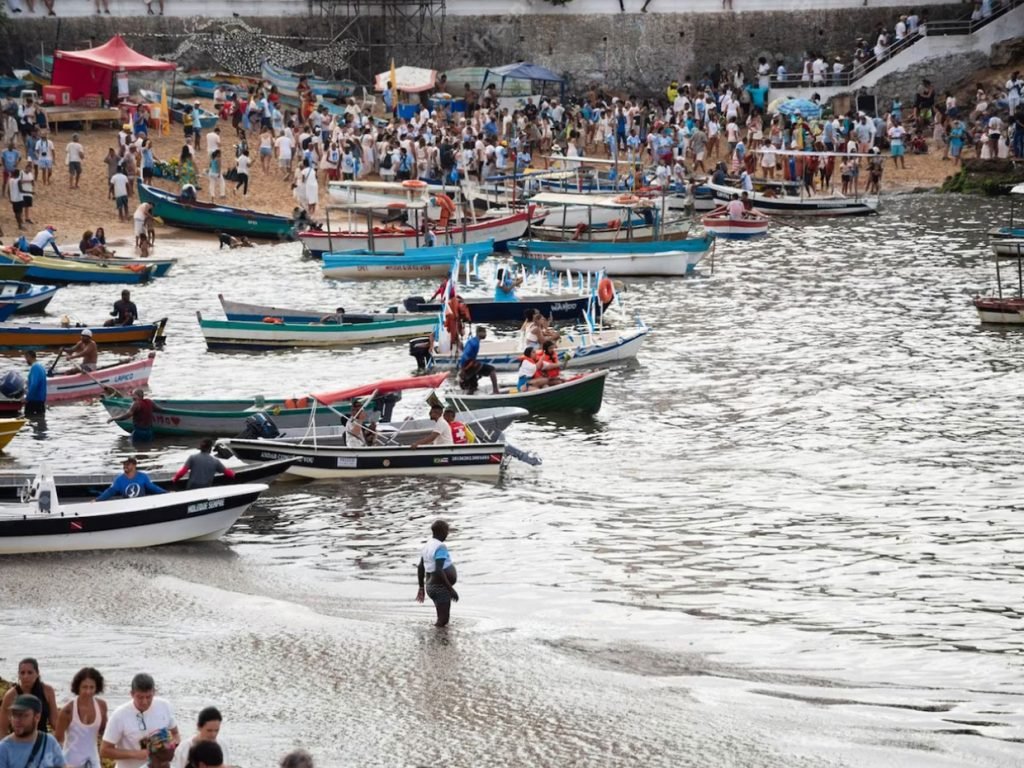
A Taste of Delicious Bahian Cuisine
When we think of Bahia’s traditional cuisine, dishes like moqueca, acarajé, abará, vatapá, caruru, clams, a tasty piece of fried grouper, and many other delights come to mind—almost all flavored with the iconic palm oil (azeite de dendê).
Bahian food is a rich blend of African, Indigenous, and Portuguese influences, bursting with vibrant flavors and colors that tell the story of the region’s culture.
If you visit Bahia, trying these dishes is an absolute must!
Moqueca
Moqueca is a traditional fish stew made with onion, chili pepper, tomato, cilantro leaves, and malagueta pepper, all cooked in palm oil and coconut milk.
This dish is a perfect harmony of flavors—creamy, spicy, and aromatic—reflecting the rich culinary heritage of Bahia.
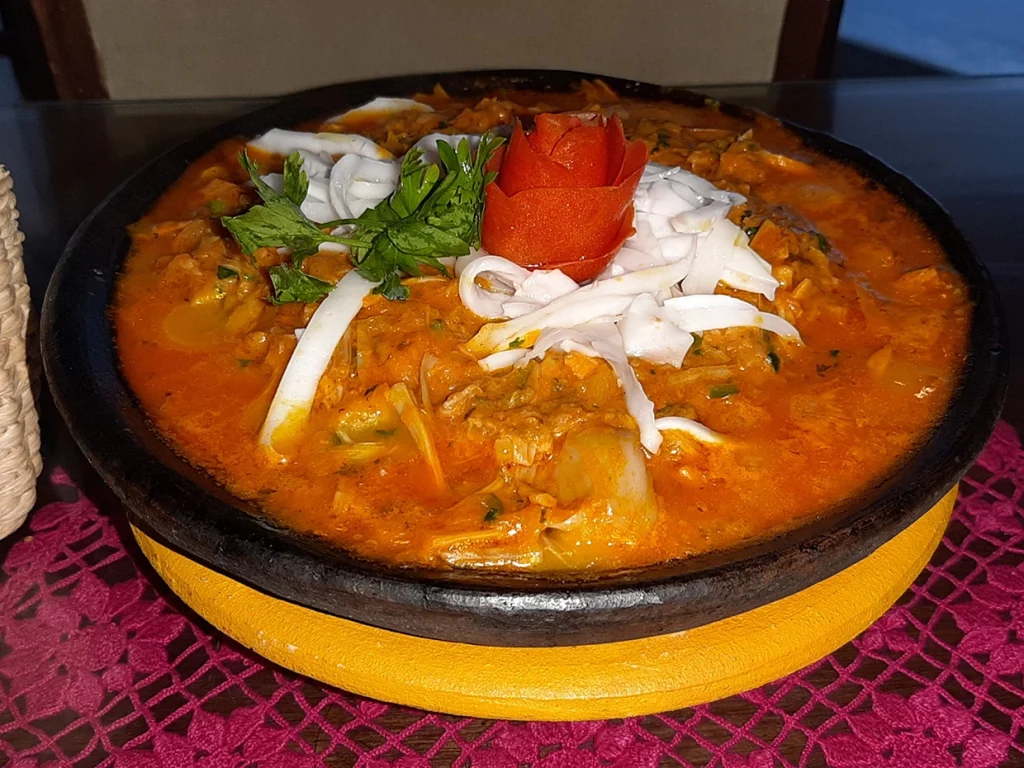
Moqueca
Acarajé
Acarajé is a classic dish from Afro-Brazilian cuisine, made from a dough of peeled black-eyed peas, onion, and salt, fried in dendê oil (palm oil). Once fried, the dough is stuffed or served with spicy sauce, shrimp, vatapá, caruru, and salad.
In Bahia, you’ll often see it being fried and sold right on the streets. The stalls where Bahian women display their products are called tabuleiros da Bahiana, and the vendors wear traditional white dresses.
In Salvador de Bahia, this activity is regulated by a municipal decree to preserve this important cultural tradition.
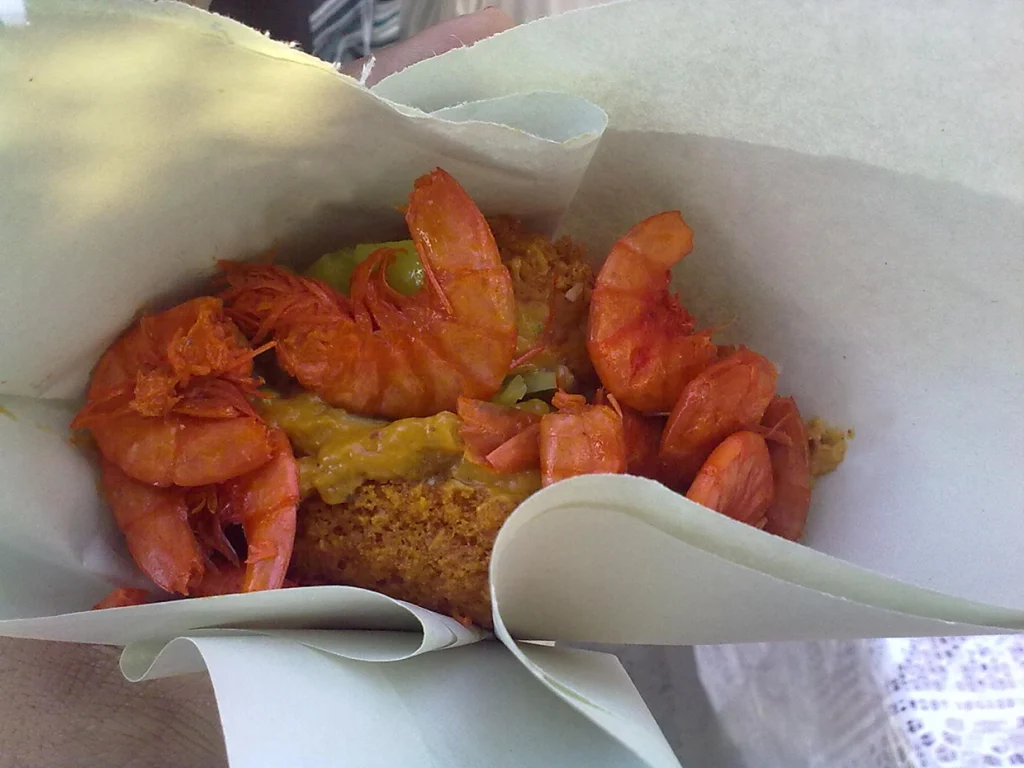
Acarajé
FAQs

What’s the Best Time to Visit Salvador de Bahia?This is a subjective question, but generally, we recommend visiting from July to mid-December — so, not right in the middle of summer.
Is It Safe to Walk Around Salvador de Bahia?You can travel to Brazil, and Bahia in particular, without major issues. However, it’s always wise to be cautious, keep an eye on your belongings, and stay aware of your surroundings.

Salvador, the capital of the state of Bahia in northeastern Brazil, is famous for its Portuguese colonial architecture, its rich Afro-Brazilian culture, and its stunning tropical coastline. These are three great reasons why it’s a destination truly worth discovering.


